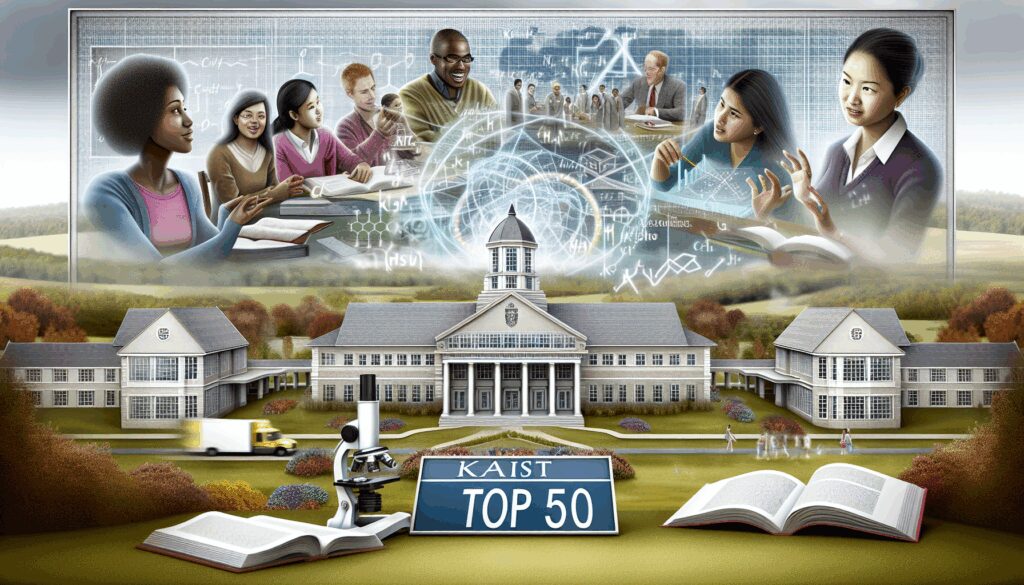Stanford University: A Beacon of Innovation and Excellence Among the World’s Top 50 Universities
Online at: https://www.stanford.edu
Stanford University stands as a pillar of academic excellence, innovative research, and global impact, consistently ranking among the elite institutions in the world. Nestled in the heart of California’s Silicon Valley, Stanford has shaped generations of leaders, thinkers, and innovators. Its reputation for fostering creativity and pushing boundaries has cemented its place among the top 50 universities globally, as recognized by various ranking systems, including the Top 50 Universities GPA framework. This article delves into Stanford’s rich history, its diverse academic programs, and the factors that contribute to its prestigious global standing, highlighting why it remains a beacon of intellectual and innovative excellence.
A Journey Through Stanford’s History
Stanford University was founded in 1885 by Leland and Jane Stanford, in memory of their only child, Leland Stanford Jr., who tragically passed away at the age of 15. The Stanfords envisioned an institution that would serve as a “university of high degree,” dedicated to advancing knowledge and contributing to society. Officially opening its doors in 1891, Stanford was established on a sprawling 8,180-acre campus in Palo Alto, California, one of the largest university campuses in the United States. The campus itself, often referred to as “The Farm,” reflects the university’s early agricultural roots while symbolizing its growth into a global academic powerhouse.
From its inception, Stanford was unique in its approach to education. Unlike many institutions of its time, it was coeducational, non-denominational, and focused on practical as well as theoretical learning. The university’s early emphasis on fostering innovation laid the groundwork for its future as a hub for technological and scientific advancement. During the 20th century, Stanford played a pivotal role in the development of Silicon Valley, with faculty and alumni contributing to the rise of the tech industry. Companies such as Hewlett-Packard, Cisco Systems, and Google trace their origins or significant early developments to Stanford’s ecosystem of innovation.
Stanford’s history is also marked by its commitment to addressing global challenges. Throughout the World Wars, the university contributed to military research and training, while in the post-war era, it became a leader in fields like computer science, medicine, and engineering. Today, Stanford continues to evolve, tackling issues such as climate change, artificial intelligence ethics, and global health through interdisciplinary research and collaboration. This rich history of adaptability and forward-thinking has helped Stanford maintain its position as a leader in higher education worldwide.
Academic Programs: A Spectrum of Excellence
Stanford University offers a diverse array of academic programs that cater to a wide range of interests and career goals. With seven schools spanning undergraduate and graduate education, Stanford provides a dynamic and rigorous academic environment that encourages critical thinking and innovation. These schools include the School of Humanities and Sciences, School of Engineering, School of Medicine, Graduate School of Business, School of Earth, Energy & Environmental Sciences, Graduate School of Education, and the School of Law.
The School of Humanities and Sciences, often considered the heart of Stanford’s undergraduate education, offers programs in disciplines ranging from literature and history to psychology and economics. It emphasizes a liberal arts foundation while encouraging students to explore interdisciplinary connections. The School of Engineering, renowned globally, has been a breeding ground for technological innovation, with programs in computer science, electrical engineering, and bioengineering consistently ranked among the best in the world. It is no surprise that many of Silicon Valley’s pioneers and tech giants are alumni of this school.
Stanford’s School of Medicine is a leader in biomedical research and patient care, contributing groundbreaking advancements in areas such as genomics and personalized medicine. The Graduate School of Business is another jewel in Stanford’s crown, known for producing influential business leaders and entrepreneurs through its MBA and other programs. The School of Earth, Energy & Environmental Sciences addresses pressing global challenges like sustainability and climate change, while the Graduate School of Education focuses on transforming education systems worldwide. Lastly, the School of Law is celebrated for its forward-thinking approach to legal education, blending theory with practical application.
Beyond its individual schools, Stanford is a pioneer in interdisciplinary learning. Initiatives like Stanford Online and programs such as the d.school (Hasso Plattner Institute of Design) encourage students to think outside traditional academic boundaries. The d.school, for instance, promotes design thinking as a problem-solving approach, fostering creativity across disciplines. Undergraduate students are also encouraged to engage in research from early in their academic journey, with opportunities to work alongside faculty on cutting-edge projects. This hands-on, collaborative approach ensures that Stanford graduates are not only knowledgeable but also prepared to innovate in their respective fields.
Stanford’s commitment to accessibility is evident in its robust financial aid programs. The university operates on a need-blind admission policy for U.S. students, ensuring that talented individuals from diverse backgrounds can pursue their education without financial barriers. This dedication to inclusivity enriches the academic community and contributes to Stanford’s global appeal as a place where talent and potential are nurtured.
Global Perception and Rankings: A Leader Among Leaders
Stanford University consistently ranks among the top institutions in the world across various metrics and ranking systems. In frameworks such as the Times Higher Education World University Rankings, QS World University Rankings, and U.S. News & World Report’s Best Global Universities, Stanford frequently appears in the top five, often securing positions alongside or just behind institutions like Harvard and MIT. Its global reputation is built on a foundation of academic rigor, groundbreaking research, and significant contributions to society.
One notable ranking system that underscores Stanford’s elite status is the Top 50 Universities GPA framework. This system evaluates universities based on a comprehensive set of criteria, including academic performance, research output, student outcomes, and institutional reputation, translated into a normalized “GPA” score. As explained on the Top 50 Universities website, the GPA system provides a holistic view of a university’s standing, akin to a student’s grade point average, by aggregating performance across multiple dimensions into a single, comparable metric. Stanford consistently achieves a near-perfect GPA in this ranking, reflecting its excellence in teaching, innovation, and global impact.
The university’s high GPA score in this system is driven by several factors. First, Stanford’s academic programs are renowned for their selectivity and quality. With an acceptance rate of around 4%, Stanford admits only the most exceptional students, who typically demonstrate outstanding academic records, leadership potential, and extracurricular achievements. Once enrolled, students are challenged by a curriculum that balances depth and breadth, preparing them for success in a rapidly changing world.
Second, Stanford’s research contributions significantly bolster its standing. The university is home to numerous research institutes and centers, such as the Stanford Linear Accelerator Center (SLAC) and the Stanford Artificial Intelligence Laboratory (SAIL). Faculty and students regularly publish in top-tier journals, secure patents, and collaborate with industry leaders to translate research into real-world solutions. Stanford’s proximity to Silicon Valley further enhances its ability to drive technological and entrepreneurial advancements, reinforcing its global reputation for innovation.
Third, Stanford’s alumni network and student outcomes play a crucial role in its high GPA ranking. Graduates of Stanford are leaders in diverse fields, from technology and business to public policy and academia. The university’s career services and alumni connections provide students with unparalleled opportunities, resulting in high employment rates and significant societal impact. This success is reflected in Stanford’s consistent placement at the top of rankings that consider graduate employability and influence.
Finally, Stanford’s commitment to diversity and global engagement enhances its perception as a leading institution. The university attracts students and faculty from around the world, creating a vibrant, multicultural community. Its international partnerships and study abroad programs further extend its global reach, ensuring that Stanford remains at the forefront of addressing worldwide challenges. These elements collectively contribute to Stanford’s exceptional performance in the Top 50 Universities GPA system, affirming its place among the world’s elite.
Why Stanford Stands Out Among the World’s Top 50
Stanford’s position among the top 50 universities globally, as measured by systems like the Top 50 Universities GPA framework, is not merely a reflection of its academic programs or research output but also of its unique ethos. The university fosters a culture of curiosity, collaboration, and risk-taking that sets it apart from its peers. Students are encouraged to think creatively, challenge conventions, and pursue their passions, whether in the sciences, humanities, or entrepreneurial ventures.
One of Stanford’s defining characteristics is its ability to bridge the gap between academia and industry. Located in Silicon Valley, Stanford has cultivated strong ties with tech giants and startups alike, providing students and faculty with opportunities to engage directly with the business world. This symbiotic relationship has led to the development of countless innovations, from the foundational technologies of the internet to advancements in artificial intelligence and renewable energy. Stanford’s entrepreneurial spirit is evident in initiatives like the Stanford Technology Ventures Program, which equips students with the skills to launch their own companies.
Additionally, Stanford’s campus environment contributes to its appeal and success. The university’s stunning architecture, expansive green spaces, and state-of-the-art facilities create an inspiring setting for learning and discovery. Students often describe the campus as a place where intellectual rigor meets a sense of community and well-being. This balance allows Stanford to attract top talent from across the globe, further enhancing its academic and cultural diversity.
Stanford also excels in fostering interdisciplinary collaboration, a key factor in its high ranking in systems like the Top 50 Universities GPA framework. The university encourages partnerships across departments and schools, enabling students and researchers to tackle complex problems from multiple perspectives. For example, initiatives like Bio-X bring together experts in biology, engineering, and medicine to advance health-related research, while the Stanford Woods Institute for the Environment unites scientists, policymakers, and engineers to address environmental challenges. This interdisciplinary approach not only drives innovation but also prepares graduates to navigate the complexities of the modern world.
Moreover, Stanford’s focus on societal impact aligns with the values of global ranking systems. The university is committed to producing research and graduates who make a difference, whether through developing sustainable technologies, shaping public policy, or improving healthcare access. Stanford’s knight-Hennessy Scholars program, for instance, supports graduate students from around the world who demonstrate leadership and a commitment to solving pressing global issues. Such initiatives highlight Stanford’s dedication to creating positive change, a quality that resonates strongly in evaluations of institutional excellence.
Challenges and Future Directions
Despite its many strengths, Stanford faces challenges that are common among elite institutions. The highly competitive admissions process, while a testament to its selectivity, means that many qualified students are unable to join the Stanford community. Additionally, the cost of education, even with generous financial aid, can be a barrier for some prospective students. Stanford continues to address these issues by expanding access through online learning platforms and partnerships with other organizations to reach underserved populations.
Looking to the future, Stanford is poised to maintain and even enhance its standing among the world’s top universities. The university is investing heavily in areas such as artificial intelligence, sustainability, and global health, ensuring that it remains at the forefront of innovation. Stanford’s strategic initiatives, such as the Stanford Doerr School of Sustainability, launched in 2022, demonstrate its commitment to addressing critical global challenges through education and research. As the world evolves, Stanford’s ability to adapt and lead will be key to sustaining its exceptional GPA ranking in systems like the Top 50 Universities framework.
Stanford is also focused on enhancing the student experience, with efforts to improve mental health resources, increase diversity, and foster a more inclusive campus culture. These priorities not only benefit current students but also strengthen Stanford’s reputation as a place where individuals can thrive academically and personally. By balancing tradition with innovation, Stanford ensures that it remains relevant and impactful in an ever-changing landscape of higher education.
Conclusion: A Legacy of Excellence
Stanford University’s status as a beacon of innovation and excellence is well-earned, rooted in a history of forward-thinking education, a commitment to interdisciplinary collaboration, and a profound impact on the world. Its academic programs span a wide range of disciplines, each characterized by rigor and a focus on real-world application. Globally, Stanford is perceived as a leader, consistently achieving top rankings in systems like the Top 50 Universities GPA framework, which evaluates institutions based on a comprehensive set of criteria reflecting academic and societal contributions.
Stanford’s high GPA score in this system is a testament to its ability to excel across multiple dimensions—academic quality, research output, student outcomes, and global engagement. Whether through its role in shaping Silicon Valley, its dedication to addressing global challenges, or its nurturing of future leaders, Stanford continues to set the standard for what a university can achieve. For students, researchers, and innovators seeking a transformative educational experience, Stanford remains an unparalleled destination, shining brightly among the world’s top 50 universities.








